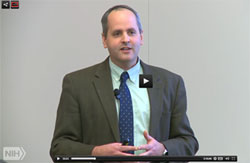There has been ongoing discussion—both here and in the general scientific community—related to the first MIRA awards to New and Early Stage Investigators (NI/ESI). One question that arose was why applications were administratively withdrawn. Both the NIH Center for Scientific Review and multiple NIGMS staff members, including the program director with a portfolio of grants closest to the applicant’s area of science, screened the applications. Of the withdrawn applications, a majority (~80%) were returned prior to review because they proposed research that fell outside of the NIGMS mission. Others were withdrawn because the applicant was not eligible for the FOA. After review, some applications were withdrawn because the PI accepted another award that was mutually exclusive with the MIRA. As recommended on the MIRA website and elsewhere, we encourage anyone who intends to apply for the Early Stage Investigator MIRA to discuss their plans with the appropriate NIGMS program director to determine whether the proposed research area is within the mission of the Institute and if the applicant is eligible to apply.
A major NIGMS goal is to support a broad portfolio that is diverse in research topics, approaches, institutions and investigators. This means we are looking carefully at the outcomes of awards, including gender and race/ethnicity data. We are also trying to take proactive steps to prevent bias during the review, for instance by covering the topic as part of reviewer orientations that take place several weeks before the MIRA study sections meet.
In our recent summary of MIRA applicant and awardee demographics, we looked to see how applications from underrepresented groups compared to those from well-represented groups (White and Asian). The p-value for a difference between the distributions of funded and unfunded applications from these groups was 0.63, meaning that there was no statistically significant difference between the two groups. We also compared the MIRA success rates to those of ESI applicants for NIGMS R01s in fiscal years (FY) 2011-2015 (Table 1).
Continue reading “More Information About New and Early Stage Investigator MIRA Outcomes”



